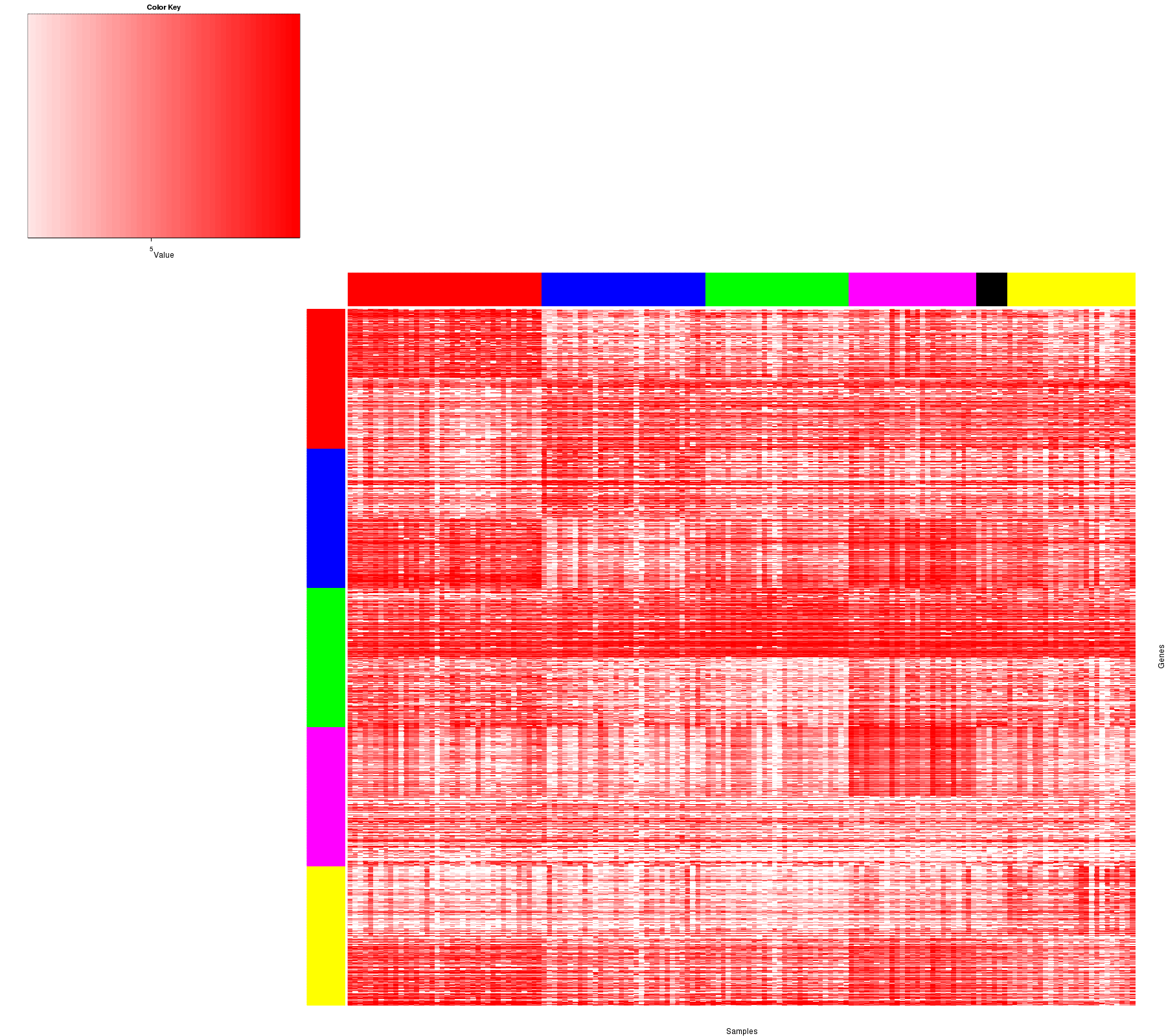Clustering of mRNAseq gene expression: consensus NMF
Glioblastoma Multiforme (Primary solid tumor)
22 February 2013
|
analyses__2013_02_22
Maintainer Information
Citation Information
Maintained by TCGA GDAC Team
(Broad Institute/MD Anderson Cancer Center/Harvard Medical School)
Cite as
Broad Institute TCGA Genome Data Analysis Center
(2013):
Clustering of mRNAseq gene expression: consensus NMF.
Broad Institute of MIT and Harvard.
doi:10.7908/C1G73BV9
Overview
Introduction
Summary
The most robust consensus NMF clustering of 154 samples using the 1500 most variable genes was identified for k = 6 clusters. We computed the clustering for k = 2 to k = 8 and used the cophenetic correlation coefficient to determine the best solution.
Results
Gene expression patterns of molecular subtypes
Consensus and correlation matrix
Silhouette widths
Samples assignment with silhouette width
Marker genes of each subtype
Methods & Data
Copyright © 2013
Broad Institute TCGA GDAC as part of the TCGA Research Network.
All rights reserved.




